French nuclear power lobbyists used Fukushima smear campaign to promote own businesses If this were a movie, this would be disgusting and ironically hilarious! Since it's real, it's just tragic. Mainichi Daily News. Excerpts:
The 33-page brochure underscored that General Electric Co. (GE)'s Mark I containment system was employed at the Fukushima plant, while containing speculation and describing fuel melting in the spent fuel storage pool, which never took place. On its last page, the brochure concluded that Tokyo Electric Power Co. (TEPCO) apparently had not released most of the information it held. (And yet, it's hard to get worked up about someone smearing TEPCO..)
The leaflet sent shockwaves around Tokyo and Washington, as well as GE officials, who were busy responding to the nuclear crisis. Areva lobbyists stressed that the accident was peculiar to Japan when they handed out the leaflets, hinting that similar accidents would never occur with nuclear plant systems provided by Areva. It was obvious to the recipients of the brochures that they were part of Areva's maneuvering to quash its competitors in the nuclear power business.
French President Nicolas Sarkozy's visit to Japan on March 31 almost coincided with the distribution of the leaflets. During a meeting with Prime Minister Naoto Kan, Sarkozy made assurances that Japan will recover from the crisis and promised to offer the country his full support. He further requested Kan to deliver the opening speech at the G8 summit meeting starting on May 26 in Deauville, France -- marking the first time for a Japanese prime minister to do so.
..
Japanese nuclear reactor manufacturers were also overwhelmed by France's marketing strategies. They were effectively overtaken by Areva when the company appealed to TEPCO that it has a better purification system to decontaminate radioactive water released from the Fukushima plant than any other manufacturers and that it could deliver the system swiftly. "We had no choice but to put up with the unendurable," lamented a senior official with a Japanese manufacturer.
After successfully receiving an order from TEPCO, Areva's Lauvergeion stated that the era of low-price competition in the nuclear power business was over, signaling her confidence in Areva's products. She subsequently resigned in late June.
Areva proves they are soulless. Kinda funny, then(if this were a movie, mind you..) that their decontamination system is a piece of shit.. Yup. Here in the real world, the joke's on us.
What Really Happened At Fukushima? From Before It's News. Excerpts:
Throughout the months of lies and misinformation, one story has stuck: “The earthquake knocked out the plant’s electric power, halting cooling to its reactors,” as the government spokesman Yukio Edano said at a March 15 press conference in Tokyo. The story, which has been repeated again and again, boils down to this: “after the earthquake, the tsunami – a unique, unforeseeable [the Japanese word is soteigai] event - then washed out the plant’s back-up generators, shutting down all cooling and starting the chain of events that would cause the world’s first triple meltdown to occur.”
But what if recirculation pipes and cooling pipes, burst, snapped, leaked, and broke completely after the earthquake -- long before the tidal wave reached the facilities, long before the electricity went out? This would surprise few people familiar with the 40-year-old Unit 1, the grandfather of the nuclear reactors still operating in Japan.
The authors have spoken to several workers at the plant who recite the same story: Serious damage to piping and at least one of the reactors before the tsunami hit.
And:
The reason for official reluctance to admit that the earthquake did direct structural damage to reactor one is obvious. Katsunobu Onda, author of TEPCO: The Dark Empire (東京電力・暗黒の帝国), who sounded the alarm about the firm in his 2007 book explains it this way: “If TEPCO and the government of Japan admit an earthquake can do direct damage to the reactor, this raises suspicions about the safety of every reactor they run. They are using a number of antiquated reactors that have the same systematic problems, the same wear and tear on the piping.”
..
Onda notes, “I’ve spent decades researching TEPCO and its nuclear power plants and what I’ve found, and what government reports confirm is that the nuclear reactors are only as strong as their weakest links, and those links are the pipes.”
Have they told the truth about anything?
File Under: More evidence of The Worst Case Scenario. Cesium 137 Found in Tokyo Drinking Water
Radioactive cesium-137 was found in Tokyo’s tap water for the first time since April as Japan grapples with the worst nuclear disaster in 25 years. The level was below the safety limit set by the government. (Which, I'm sure, is comforting..)
Cesium-137 registered at 0.14 becquerel per kilogram in Shinjuku ward on July 2 and none(?!!) was discovered yesterday, compared with 0.21 becquerel on April 22, according to the Tokyo Metropolitan Institute of Public Health. No cesium-134 or iodine-131 was detected, the agency said on its website.
And:
Products including spinach, mushrooms, bamboo shoots, tea, milk, plums and fish have been found to be contaminated with cesium and iodine as far as 360 kilometers (224 miles) from the station. Prolonged exposure to radiation in the air, ground and food can cause leukemia and other cancers, according to the London-based World Nuclear Association.
#Fukushima I Nuke Plant Reactor 5 Cooling Stopped for 3.5 Hours Due to Ruptured Pipe Ex-SKF via Rense. Excerpts:
A worker doing the routine inspection of the site in the morning of July 3 noticed the seawater gushing from the pipe that connects to one of the two temporary RHRS (residual heat removal system) pumps for the Reactor 5. The rupture on the pipe was 30 centimeters long and 7 centimeters wide.
..
TEPCO called it "leakage", just like a "puddle" that turns out to fill the turbine basement or reactor building basement. An understatement.
#Radiation in Japan: Radioactive Cesium from Ashes from Household Garbage at Waste Disposal Plant in Edogawa-Ku, Tokyo Ex-SKF/Rense. Excerpts:
Not a water purification plant or at a waste water treatment plant, but a plant that burns regular, household garbage in eastern Tokyo was found with a high level of radioactive cesium in the fly ashes caught in the incinerator filter.
Edogawa-ku is located at the eastern end of Tokyo. Along with its northern neighbor Katsushika-K, Edogawa-ku seems to have been in denial of the elevated radiation levels throughout the ward, and has only recently (June 18) started to measure the radiation at multiple locations within the ward.
The Edogawa waste disposal plant is located by the Edogawa River that separates Edogawa-ku and Chiba Prefecture. The plant can burn 600 tonnes of garbage per day with 24-hour operation, with 2 incinerators. It's in a mixed residential/commercial neighborhood, with 2 elementary schools nearby, and a nursery school right next to the plant, according to the Google Map.
And:
As I said above, a nursery school is right next to the plant, and there are 2 elementary schools nearby.
Ashes, ashes, we all fall down...
The 33-page brochure underscored that General Electric Co. (GE)'s Mark I containment system was employed at the Fukushima plant, while containing speculation and describing fuel melting in the spent fuel storage pool, which never took place. On its last page, the brochure concluded that Tokyo Electric Power Co. (TEPCO) apparently had not released most of the information it held. (And yet, it's hard to get worked up about someone smearing TEPCO..)
The leaflet sent shockwaves around Tokyo and Washington, as well as GE officials, who were busy responding to the nuclear crisis. Areva lobbyists stressed that the accident was peculiar to Japan when they handed out the leaflets, hinting that similar accidents would never occur with nuclear plant systems provided by Areva. It was obvious to the recipients of the brochures that they were part of Areva's maneuvering to quash its competitors in the nuclear power business.
French President Nicolas Sarkozy's visit to Japan on March 31 almost coincided with the distribution of the leaflets. During a meeting with Prime Minister Naoto Kan, Sarkozy made assurances that Japan will recover from the crisis and promised to offer the country his full support. He further requested Kan to deliver the opening speech at the G8 summit meeting starting on May 26 in Deauville, France -- marking the first time for a Japanese prime minister to do so.
..
Japanese nuclear reactor manufacturers were also overwhelmed by France's marketing strategies. They were effectively overtaken by Areva when the company appealed to TEPCO that it has a better purification system to decontaminate radioactive water released from the Fukushima plant than any other manufacturers and that it could deliver the system swiftly. "We had no choice but to put up with the unendurable," lamented a senior official with a Japanese manufacturer.
After successfully receiving an order from TEPCO, Areva's Lauvergeion stated that the era of low-price competition in the nuclear power business was over, signaling her confidence in Areva's products. She subsequently resigned in late June.
Areva proves they are soulless. Kinda funny, then(if this were a movie, mind you..) that their decontamination system is a piece of shit.. Yup. Here in the real world, the joke's on us.
What Really Happened At Fukushima? From Before It's News. Excerpts:
Throughout the months of lies and misinformation, one story has stuck: “The earthquake knocked out the plant’s electric power, halting cooling to its reactors,” as the government spokesman Yukio Edano said at a March 15 press conference in Tokyo. The story, which has been repeated again and again, boils down to this: “after the earthquake, the tsunami – a unique, unforeseeable [the Japanese word is soteigai] event - then washed out the plant’s back-up generators, shutting down all cooling and starting the chain of events that would cause the world’s first triple meltdown to occur.”
But what if recirculation pipes and cooling pipes, burst, snapped, leaked, and broke completely after the earthquake -- long before the tidal wave reached the facilities, long before the electricity went out? This would surprise few people familiar with the 40-year-old Unit 1, the grandfather of the nuclear reactors still operating in Japan.
The authors have spoken to several workers at the plant who recite the same story: Serious damage to piping and at least one of the reactors before the tsunami hit.
And:
The reason for official reluctance to admit that the earthquake did direct structural damage to reactor one is obvious. Katsunobu Onda, author of TEPCO: The Dark Empire (東京電力・暗黒の帝国), who sounded the alarm about the firm in his 2007 book explains it this way: “If TEPCO and the government of Japan admit an earthquake can do direct damage to the reactor, this raises suspicions about the safety of every reactor they run. They are using a number of antiquated reactors that have the same systematic problems, the same wear and tear on the piping.”
..
Onda notes, “I’ve spent decades researching TEPCO and its nuclear power plants and what I’ve found, and what government reports confirm is that the nuclear reactors are only as strong as their weakest links, and those links are the pipes.”
Have they told the truth about anything?
File Under: More evidence of The Worst Case Scenario. Cesium 137 Found in Tokyo Drinking Water
Radioactive cesium-137 was found in Tokyo’s tap water for the first time since April as Japan grapples with the worst nuclear disaster in 25 years. The level was below the safety limit set by the government. (Which, I'm sure, is comforting..)
Cesium-137 registered at 0.14 becquerel per kilogram in Shinjuku ward on July 2 and none(?!!) was discovered yesterday, compared with 0.21 becquerel on April 22, according to the Tokyo Metropolitan Institute of Public Health. No cesium-134 or iodine-131 was detected, the agency said on its website.
And:
Products including spinach, mushrooms, bamboo shoots, tea, milk, plums and fish have been found to be contaminated with cesium and iodine as far as 360 kilometers (224 miles) from the station. Prolonged exposure to radiation in the air, ground and food can cause leukemia and other cancers, according to the London-based World Nuclear Association.
#Fukushima I Nuke Plant Reactor 5 Cooling Stopped for 3.5 Hours Due to Ruptured Pipe Ex-SKF via Rense. Excerpts:
A worker doing the routine inspection of the site in the morning of July 3 noticed the seawater gushing from the pipe that connects to one of the two temporary RHRS (residual heat removal system) pumps for the Reactor 5. The rupture on the pipe was 30 centimeters long and 7 centimeters wide.
..
TEPCO called it "leakage", just like a "puddle" that turns out to fill the turbine basement or reactor building basement. An understatement.
#Radiation in Japan: Radioactive Cesium from Ashes from Household Garbage at Waste Disposal Plant in Edogawa-Ku, Tokyo Ex-SKF/Rense. Excerpts:
Not a water purification plant or at a waste water treatment plant, but a plant that burns regular, household garbage in eastern Tokyo was found with a high level of radioactive cesium in the fly ashes caught in the incinerator filter.
Edogawa-ku is located at the eastern end of Tokyo. Along with its northern neighbor Katsushika-K, Edogawa-ku seems to have been in denial of the elevated radiation levels throughout the ward, and has only recently (June 18) started to measure the radiation at multiple locations within the ward.
The Edogawa waste disposal plant is located by the Edogawa River that separates Edogawa-ku and Chiba Prefecture. The plant can burn 600 tonnes of garbage per day with 24-hour operation, with 2 incinerators. It's in a mixed residential/commercial neighborhood, with 2 elementary schools nearby, and a nursery school right next to the plant, according to the Google Map.
And:
As I said above, a nursery school is right next to the plant, and there are 2 elementary schools nearby.
Ashes, ashes, we all fall down...







































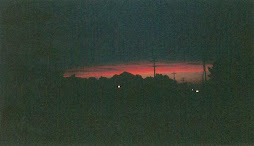





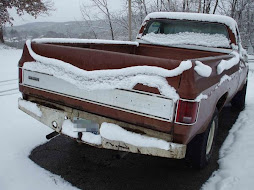

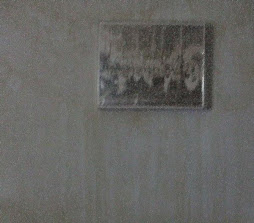





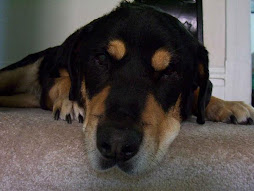
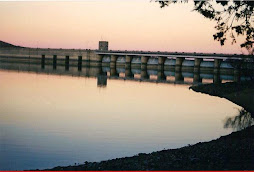







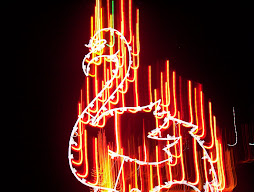




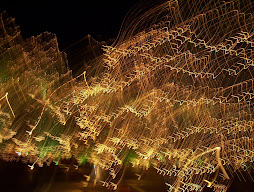

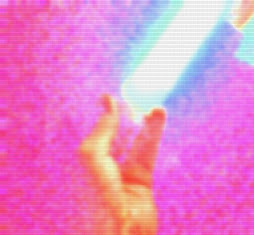









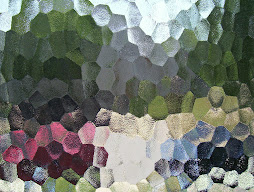
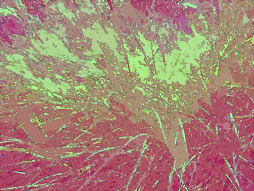
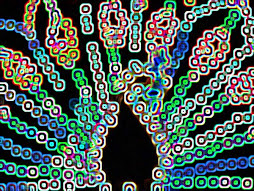









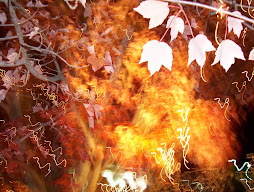









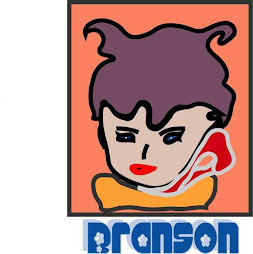



No comments:
Post a Comment